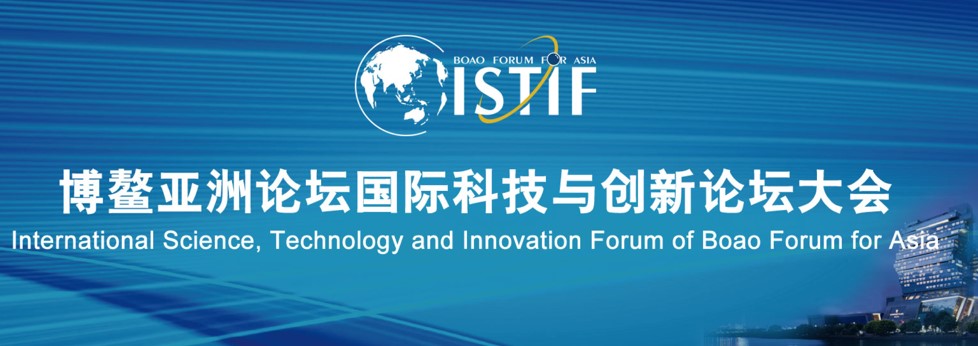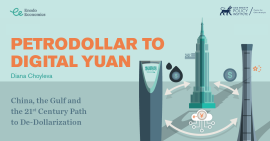International Science, Technology and Innovation Forum (ISTIF) of BOAO Forum for Asia
Special Event
Enodo Economics Chief Economist, Diana Choyleva, took part in the Second Conference of ISTIF on 28th of September.
As a major forum of the conference this year, the session “Capital Boosts Scientific and Technological Innovation” was successfully held online.
Description
The session was hosted by Yanqing Yang, Director of the Planning and Development Department of Shanghai Artificial Intelligence Laboratory and Visiting Professor at Fudan University. During the session, representatives from international organizations, government departments, research institutions, enterprises and academia expressed their views on the topic of “Promoting the deep integration of finance and science and technology innovation”. This session aims to contribute a “Boao solution” to promote effective financial services for science, technology and innovation (STI), and to support society with high-quality and sustainable development.
You can watch Diana Choyleva’s speech HERE.

Diana Choyleva’s speech
”Greetings to everyone from London at BOAO’s second conference of the International Science, Technology and Innovation Forum.
It’s a great pleasure for me to take part in this discussion. It would have been an even greater pleasure to be able to do that in person. But hopefully I’ll be able to travel to China for the 3rd conference.
Today, I will talk to you about how to channel capital in the best possible way in order to foster technological development. And I will do so from a macroeconomic perspective.
Over the past forty years, China has achieved a tremendous transformation turning into the global manufacturing powerhouse. It surprised the West it has surprised even itself with the speed of catch-up and technological development. But during that time of fast industrial expansion, China chose to keep its financial sector largely sheltered and as a result, it remained underdeveloped.
But now the time has come for China to foster the development of its own financial sector in order to enable its economy to complete effectively in a more challenging international environment. Chinese policymakers understand this imperative and have opened the doors of China’s financial sector fully and are transforming the way capital is allocated at home.
I would like to focus today on two key changes that are needed to help China channel savings efficiently and empower sustainable development. The first change which is necessary and is well understood is to help China’s banks lend to small and medium-size enterprises. SMEs in China account for the bulk of employment. They’re also the wellspring of entrepreneurial spirit which is needed for innovation.
Traditionally, China’s banking sector has not served their funding needs. If SMEs’ access to bank funding is improved, this will increase efficiency. But it’s not an easy task as the authorities have discovered over the last few years.
In developed economies big firms tend to finance their capital expenditure out of retained earnings. They use banks largely for M&A activity while small and medium-sized enterprises in the West rely on bank funding. But it’s taken decades for these banks to learn how to lend to this sector efficiently and prudently and make profit.
So, for Chinese banks to be able to increase the lending to the SMEs, there needs to be an institutional and culturally change. Bank managers need to learn how to lend to this sector prudently and this may take time.
The second change which is necessary is to develop and professionalize China’s capital markets. This will not only help diversify domestic sources of funding but actually also help the authorities achieve “common prosperity”.
During the first stage of its development, China outsourced the IPOs of its most successful and biggest companies abroad. But as a result, some of these big and successful companies were not available readily for Chinese households to invest in. The bulk of household wealth in China is invested in housing but this has created a big social divide between rich and poor.
Financial wealth in China, the bulk of it is invested is interest-bearing deposits. And at the same time China equity market is dominated by retail investors and is short-termist in nature. By encouraging the initial public offerings of China successful, big and small, companies at home and professionalizing its equity market, developing further institutional investment policymakers can make China’s equity market attractive for long-term household in investment.
So, housing becomes a much smaller share in terms of the wealth and assets of Chinese households.
The creation of Beijing Stock Exchange aimed as a platform specifically to serve innovation-oriented small and medium-size firms is also very much a step in the right direction.
So, to summarize, in order to improve the efficiency of its allocation of capital and, as a result, foster innovation and sustainable development, China needs to boost lending, bank lending to small and medium-sized enterprises, help capital markets channel lending to those enterprises as well and at the same time develop its capital markets, professionalize them, where necessary with the help of foreign know-how and in particular it needs to develop its equity market.
Thank you!”










Comments are closed.